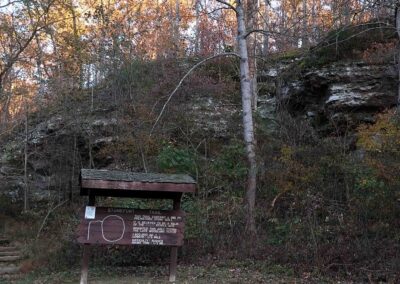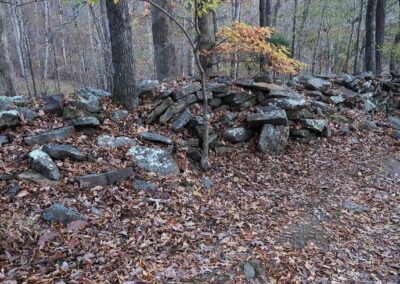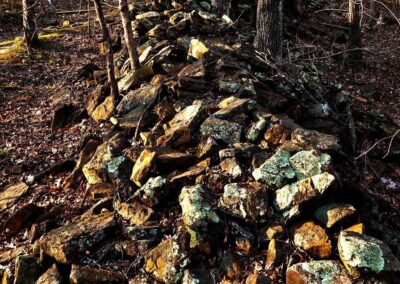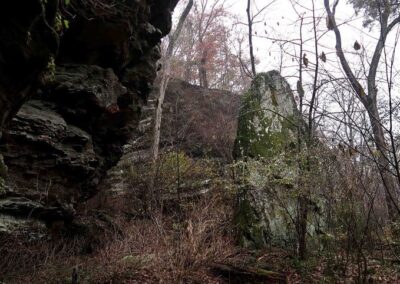Giant City Stonefort Trail Guide
Giant City Stonefort Trail gives you a glimpse into a period so long ago that we know very little about its history of it.
This short but potentially challenging trail features an ancient rock wall made by the very early-period of humans. It has been reconstructed with original materials and preserved for everyone to see.
Many ancient artifacts are kept secret around the Shawnee National Forest. Some are even locked away where no one can see them. So it’s special when the public gets the access it deserves to sites like the Giant City Stonefort Trail.
In this guide, I’ll tell you all about this trail, how to reach it, and how to make the most of hiking it.
Directions to Giant City Stonefort Trail
Getting to the Giant City Stonefort Trail is very easy.
Take Giant City Road from Highway 13 south of Carbondale for about 10 miles until you reach Giant City State Park. Turn RIGHT before the Visitor Center. Then turn LEFT between the dumpsters and the building to go down the hill. Take the RIGHT turn and drive a couple of miles. The Giant City Stonefort Trail will be on your right. There is adequate parking across from the trail.
A restroom, picnic area, and trail information are located at the trailhead. Please remember to practice Leave No Trace and pack out what you pack in if no waste cans are available.
WINTER TRAVEL: Giant City State Park is hilly, and conditions could be hazardous if wintry precipitation has fallen. Please use caution when visiting the park after winter events. At times, the roads throughout the park will be a priority for snow removal. It is important to have a plan B, just in case.
PUBLIC HEALTH: Please see the Illinois Department of Natural Resources (IDNR) website for any public health or safety closures within Giant City State Park. Try to have a Plan B just in case access is restricted within the park.
Trail Information for Giant City Stonefort Trail
The Giant City Stonefort Trail is a third of a mile in length, a loop, and has about 80 feet of elevation gain. The first trek up to the top of the bluff is the most strenuous part of the hike. It’s a good hill and might give you some heavy breathing at the top.
Most of the trail is made up of dirt mixed with rocky to smooth rock surfaces. Please use caution if the area is wet or covered in snow and ice, as it will be very slippery in spots.
The trail is not blazed, but it has been used enough that you will be able to hike on it without getting lost or taken off the trail.
Please stick to the obvious designated trail and don’t take user-created trails.
Pets are OK as long as they are on a leash.
TRAIL HAZARDS:
- During wet and wintry conditions, the trail surface in some areas can be slippery.
- There are dangerous areas along this trail, including sleep climbs and tops of bluffs.
- During the warmer months, venomous copperhead snakes may occur in this area.
- Poison ivy occurs in this area. Stay on the trail to avoid contact with it.
- Mosquitoes, ticks, and biting flies occur during warmer seasons.
- Hiking off the trail could result in hazardous incidents and getting lost.
What You Will See along the Stonefort Trail Hike
There is a lot to see along the Giant City Stonefort Trail.
From the start, you can see a large waterfall cascade to your left. The waterfall is best seen after we’ve had a few days to more than a week of moderate to heavy rainfall. The wetter, the better for this particular waterfall. It is also nice to see when frozen. Whether running or frozen, those conditions will mean the trail will be slippery – please use caution.
While hiking up the trail, take a look at the bluffs and smaller natural shelters to your right. You might even see wildlife around this area, such as skinks, lizards, snakes, and rodents.
When you get to the top of the trail, you’ll be greeted with an informational sign explaining the Stonefort you’re now seeing in front of you. Early Native Americans built the original structure during the Late Woodland period. These people were around long before European settlers ever came around or existed, for that matter.
The original Stonefort did not survive over the years. So during the 1930s and 1940s, when the Civilian Conservation Corps was creating the state park as we know it, the CCC men rebuilt the Stonefort to look like it did initially. The original materials were used in the reconstruction of the structure. So now you have a glimpse into what the structure most likely looked like. No one knows why the structures were made. They could have been for fortification or to keep animals within a confined space.
You’ll come up to a few overlooks as you make your way around the Stonefort and loop trail. Be careful around the edges of these overlooks. Imagine what the area looked like when the early Native Americans were looking over the area.
There is a lot to see along the way for such a short trail.
History of the Giant City Stonefort Trail
The rock formations and bluffs in Giant City State Park were created through erosion and water from ancient oceans and seas in combination with earthquakes, meteor strikes, and natural occurrences. At one time, these bluffs would have been considered a portion of a mountain range created by these natural occurrences long before humans existed. These bluffs are the oldest thing in the forest.
The Giant City Stonefort Trail has a significant history evolving around the Late Woodland Period Native Americans. These were early people long before settlers entered North America. These people were said to have lived and built the Stonefort structures around 600 to 900 AD. However, the purpose of the structure is still unknown. Southern Illinois has many Stonefort sites, including Rim Rock, Indian Kitchen, War Bluff, and Murray Bluff.
When early settlers arrived, they dismantled the Stonefort to be used for building materials. Early settlers used the material to build their homes and farmland. However, due to massive timber extraction, significant erosion occurred. Because of this, most farming operations were a failure, and many families in the area were impoverished.
By the Great Depression, the federal and state governments started buying up land to establish National Forests and state parks. So, around 1934, the CCC reconstructed Stonefort while creating Giant City State Park. Some of the original materials around the structure’s base existed and were used to recreate the structure as it originally appeared.
In modern times, the Giant City Stonefort Trail is one of the most popular hikes in the park. Foot travel is welcome on the trail during daylight hours. Digging and collecting in this area is prohibited.
Other Stuff To Do Around the Stonefort Trail
While visiting Giant City Stonefort Trail, be sure to visit other trails around Giant City State Park. There is something to do for everyone at this state park. Other hiking in the area includes Rocky Bluff in the Crab Orchard National Wildlife Refuge, Green Earth Trails in Carbondale, and Panther Den Wilderness in the Shawnee National Forest.
For dining options, be sure to visit the Giant City Lodge for great breakfast, lunch, and dinner options. The lodge is known for its fried chicken dinner. In addition, there are many international dining options around Carbondale worth trying.
Check out Union County Tourism and Carbondale Tourism websites for entertainment and shopping around the area.
The Village of Makanda has a unique boardwalk of different stores worth visiting for gifts and snacks.
The Shawnee Hills Wine Trail is also close to Giant City State Park.
For maps, information, camping permits, and state park gifts – visit the Visitor Center.
Visit the Trail Guides Homepage to see more Shawnee National Forest and State Parks guides. Join Southern Illinois Hiking & Outdoor Resources on Facebook to enjoy outdoor topics with over 25,000 members. Be sure to subscribe to the free monthly newsletter for more hiking trail tips.
Please Support Hiking with Shawn
Alrighty folks, I hope you have enjoyed this content. I provide it for free and it takes a while to create. If you would be so kind enough to support my efforts, you can do so by sharing this post with others, especially on social media. Be sure to subscribe to my YouTube Channel to see my latest videos, shorts and live streams. Follow me on Facebook, Instagram, and Twitter for unique content that you will only find on those pages. You might also join my Southern Illinois Hiking & Outdoor Resources Group on Facebook, too!
You can also support me by becoming a Patreon Supporter for as little as $3/month and you can cancel anytime (no contracts or catches). Patreons get access to extra features, exclusive articles, sticker packs, gifts and more. Consider buying official Hiking with Shawn Merchandise as another way to support me. I spend a lot of money on Hiking with Shawn and because of extremely high public land permit fees, I make very little money in return so everything helps.
Thanks again for checking out another one of my articles and until next time, I’ll see you on the trail!
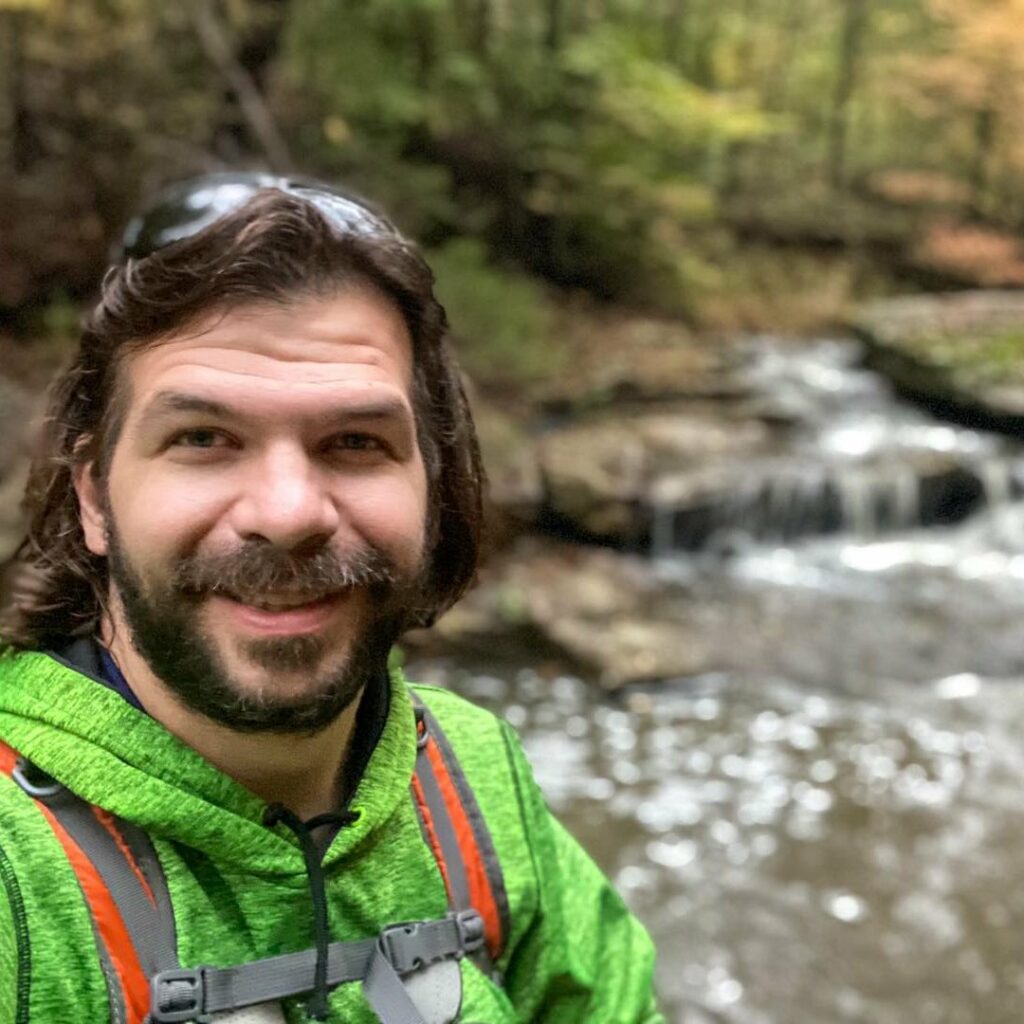
Shawn Gossman
Founder, Hiking with Shawn
Howdy folks! My name is Shawn Gossman and I founded Hiking with Shawn. I’m an avid hiker, cyclist and outdoorsman here in the Shawnee National Forest. I was born and raised in Southern Illinois and never want to leave. Click here to learn more about Shawn Gossman

